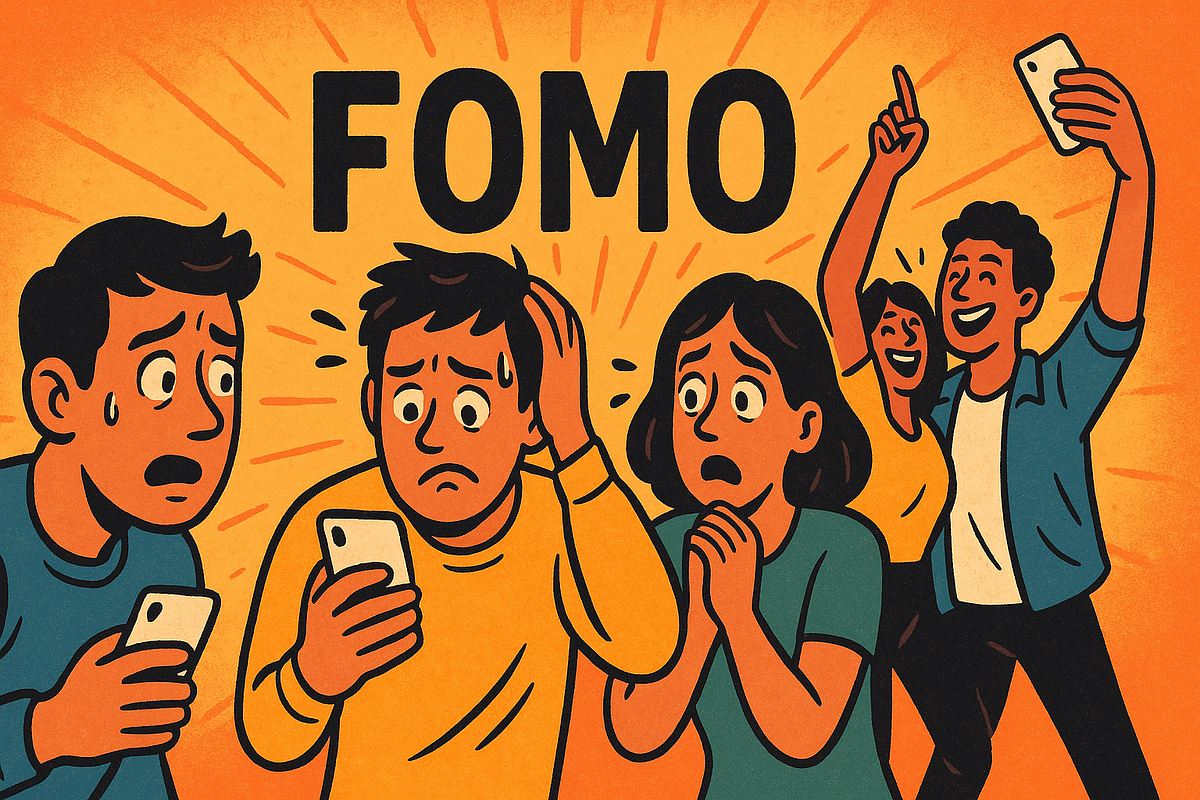The FOMO Factor: Why Customer Pain Points Might Be the Wrong Focus
--
Part of our Build in Public series at IterLight Three years into building IterLight, I’ve had a revelation that challenges everything I learned from startup books and business school case studies. While every entrepreneur’s playbook preaches finding customer “pain points,” I’ve discovered something different drives human behavior: the magnetic pull of FOMO — Fear of Missing Out. This realization started with an uncomfortable truth. Despite teaching about personalized learning and educational joy, our biggest inquiries came not from parents excited about their children’s curiosity, but from those who panicked after seeing a neighbor’s child win a science fair.
The Pain Point Paradox
Consider the $50 billion beauty industry. If we followed traditional wisdom, customers would purchase skincare products because of clear pain points: dry skin, acne, or aging concerns. But watch how people actually shop. A friend mentions a new serum that gave them “glass skin.” An influencer’s post shows an impossibly smooth complexion. Suddenly, your bathroom cabinet needs that exact product, not because your skin hurts, but because you fear missing the secret everyone else discovered. The logical pain point solution? Sleep eight hours, drink water, and eat vegetables. The FOMO-driven choice? Buy the $200 cream.
When Technology Follows FOMO, Not Need
The internet revolution offers the most striking example. What global pain point did dial-up connections solve in 1995? Communication worked fine through phones and mail. Information existed in libraries. Shopping happened in stores. Yet the internet exploded not because it fixed broken systems, but because early adopters created irresistible FOMO. Day traders made fortunes online while others worked traditional jobs. People connected with friends worldwide, while others remained geographically limited. E-commerce offered convenience that made traditional shopping feel outdated. The internet succeeded by making non-users feel left behind, not by solving their daily problems.
The Investment Paradox
Walk into any brokerage firm and witness FOMO in action. Financial advisors know the rational pain points: retirement planning, emergency funds, and wealth preservation. These concerns should drive steady, diversified investing. Instead, daily trading volume concentrates around a handful of stocks driven by speculation. Investors pile into GameStop not because their retirement planning demanded it, but because they feared missing the next big move. Cryptocurrency markets surge on social media buzz, not fundamental analysis. The actual pain point, financial security, suggests boring index funds. FOMO drives people toward whatever promises they might miss out on.
Our Educational FOMO Challenge
This pattern extends into education, creating our biggest philosophical challenge at IterLight. Parents genuinely want their children to love learning, develop curiosity, and find joy in discovery, classic pain points we can address. Yet watch parental behavior. A child expresses interest in video game design or asks about dinosaurs? Many parents downplay these sparks as distractions. But when a neighbor’s child wins a math competition or gets into an accelerated program? Suddenly, intensive tutoring becomes urgent. The real driver isn’t the pain of poor education, it’s the fear of falling behind peers.
The Values-Driven Dilemma
This creates genuine tension for mission-driven startups. We could easily exploit educational FOMO. Post success stories that make other parents feel inadequate. Create artificial scarcity around our programs. Design marketing that screams: “Your child is falling behind!” We’ve chosen a different path, one that feels slower but more sustainable. We share authentic stories of students discovering passion for subjects they once found boring. We highlight parents who learned to nurture their children’s natural curiosity rather than forcing predetermined paths. When a seventh-grader starts creating rap lyrics about historical events because our approach connected with his interests, we celebrate that breakthrough, not because it beats traditional methods, but because it sparked genuine engagement.
Building the Right Movement
Our approach requires patience. Instead of triggering immediate FOMO, we’re building something more lasting: a community of parents and educators who recognize that authentic learning creates deeper, more sustainable success than competitive pressure. We believe that when enough families experience this transformation, when children start choosing challenging books because they’re genuinely curious, when dinner conversations buzz with excited discoveries, a different kind of FOMO will emerge. Parents will fear missing out on joy, connection, and authentic growth rather than just competitive advantages.
The Long Game
Every meaningful movement starts with early adopters who choose values over velocity. The environmental movement began with individuals composting before it became trendy. The local food movement started with farmers’ market regulars before “farm-to-table” appeared on every restaurant menu. We’re betting that educational transformation follows the same pattern. By consistently demonstrating that personalized, curiosity-driven learning produces both academic results and genuine enthusiasm, we’re building toward a tipping point. When that moment arrives when nurturing authentic learning becomes the trend rather than the exception, FOMO will finally work in favor of what’s truly valuable. Until then, we’ll keep building authentically, knowing that sustainable movements require foundations stronger than fear. The irony? By refusing to exploit FOMO in the short term, we’re creating the conditions for it to support our mission in the long term. That’s a fear of missing out we can feel good about.
